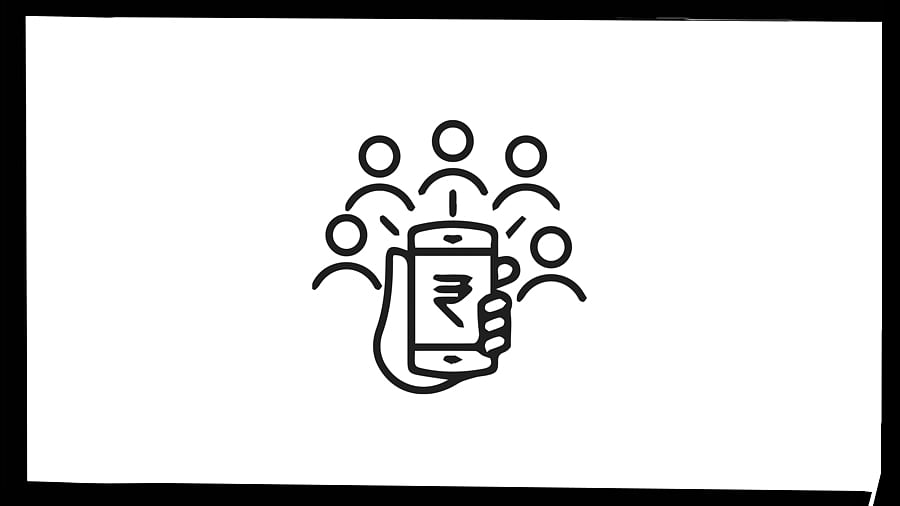
In the 2016-17 Economic Survey, the concept of Universal Basic Income (UBI) was discussed as a potential solution to reducing poverty and income inequality.
It was presented as a radical idea whose time had come. The report estimated that a direct cash transfer of Rs 7,260 to every Indian — equal to the then poverty line number — would cost 4.9 per cent of gross domestic product annually.
This was a daunting prospect given the government’s limited fiscal resources, making UBI a distant and elusive goal. However, the direct cash transfers have gained popularity. The Direct Benefit Transfer (DBT), rolled out in January 2013, eliminates leakage, is timely, is transparent, and helps financial inclusion.
The no-frills Jan Dhan bank accounts, Aadhaar identification, and mobile phones are the JAM enablers of DBT. All three have become ubiquitous, facilitating the spread of DBT, which take the form of cash or in-kind transfers.
According to the DBT website, 315 schemes across 53 ministries are being implemented by the central government alone, which have cumulatively disbursed Rs 38 trillion so far, of which Rs 3 trillion disbursed in the last fiscal year alone.
In 2023-2024, about 700 million unique beneficiaries received cash transfers. The concept of DBT is not limited to cash; the free distribution of 5 kg of food grains per person per family per month is also considered an in-kind DBT.
The number of beneficiaries for such in-kind DBTs exceeded one billion in 2023-2024. The distribution of in-kind benefits, such as free food grains or a cooking gas cylinder, also involves delivery costs. But cash DBT is directly deposited into bank accounts already created by JDY, minimising transfer costs.
This efficiency has led to the widespread adoption of cash DBT, with many states also implementing similar schemes. Including the variants of DBT implemented by various states, the total number of schemes could exceed 450.
A recent example of a cash DBT is Maharashtra’s Ladki Bahin Scheme (LBS). This gives Rs 1,500 to every woman between the ages of 21 and 65 who is domiciled in the state, not a government employee or taxpayer, and whose annual family income is less than Rs 2.5 lakh.
Since eligibility is conditional, it cannot be called universal, but over two crore applications have already been received. The chief minister has promised to double the benefit if re-elected.
The estimated cost to the state’s exchequer is Rs 46,000 crore per year. The objective of this cash transfer scheme is to empower women and help lift them out of poverty, aligning with the goals of UBI.
It was inspired by the Ladli Behena Scheme (LBS) launched in neighbouring Madhya Pradesh in January 2023, which received an enthusiastic response. That too was aimed at providing financial assistance to women, to empower them, and to have resources for skill development and training.
Interestingly, it was pitched only to married (or divorced or widowed) women. Madhya Pradesh had launched the Ladli Lakshmi scheme in 2007, which was emulated by six other states.
Unlike LBS, which is for financial empowerment, the Lakshmi scheme was aimed at the girl child and to reduce the skew in the sex ratio. The total benefit to the girl given as deferred payment on reaching the age of 21 was more than Rs 1 lakh.
When considering the various cash transfer schemes for girls and women across different states in India, the total sum is significant. To this, one can add in-kind benefits such as free tuition, bicycles, or bus tickets, implemented in a few states.
These initiatives begin to resemble a form of universal income focused on women. This development invites a reconsideration of the UBI debate and its viability in the current context, eight years after its introduction in the Economic Survey.
For UBI to be fiscally viable, many existing schemes would need to be scaled down or replaced. For instance, the cash transfer to farmer households (PM Kisaan) could be subsumed under UBI.
The fewer the conditions attached, the lower the cost, and the better the chances of UBI being effective. The approach should be opt-out rather than opt-in, meaning wealthier individuals who prefer to remain out of UBI must voluntarily opt-out, while everyone else is included by default.
Universal coverage simplifies administration and reduces exclusion errors. Of course, this also means that the benefit may go to individuals who do not need them.
As the Economic Survey pointed out, the cash-based UBI can be potentially inflationary. And in any case, UBI may need to be enhanced every year due to inflation indexation. This aspect makes the UBI less attractive, because if the inflation burden rises faster than the growth of taxes, then at some point it becomes unsustainable.
One practical approach is to roll out UBI like a targeted public distribution system (TPDS), which only focuses on backward areas and districts. A pilot UBI can be rolled out that targets only the most vulnerable groups, such as the elderly, poor women (like in LBS of Maharashtra or Madhya Pradesh), or indigent and the disabled.
It could be tried out in different states. The learning from such a pilot can be used to better design a UBI that is affordable and effective.
There remains the philosophical issue of whether basic income is a right. Since we have enacted rights or have given de facto entitlement to food, education, and rural employment, this idea of basic income, especially to the most vulnerable, is but a natural extension.
Given the proliferation across different states of various cash transfer and other free in-kind benefits schemes for girls and women, we are already marching toward a modified form of UBI.
(The writer is a Pune-based economist)
(Syndicate: The Billion Press)